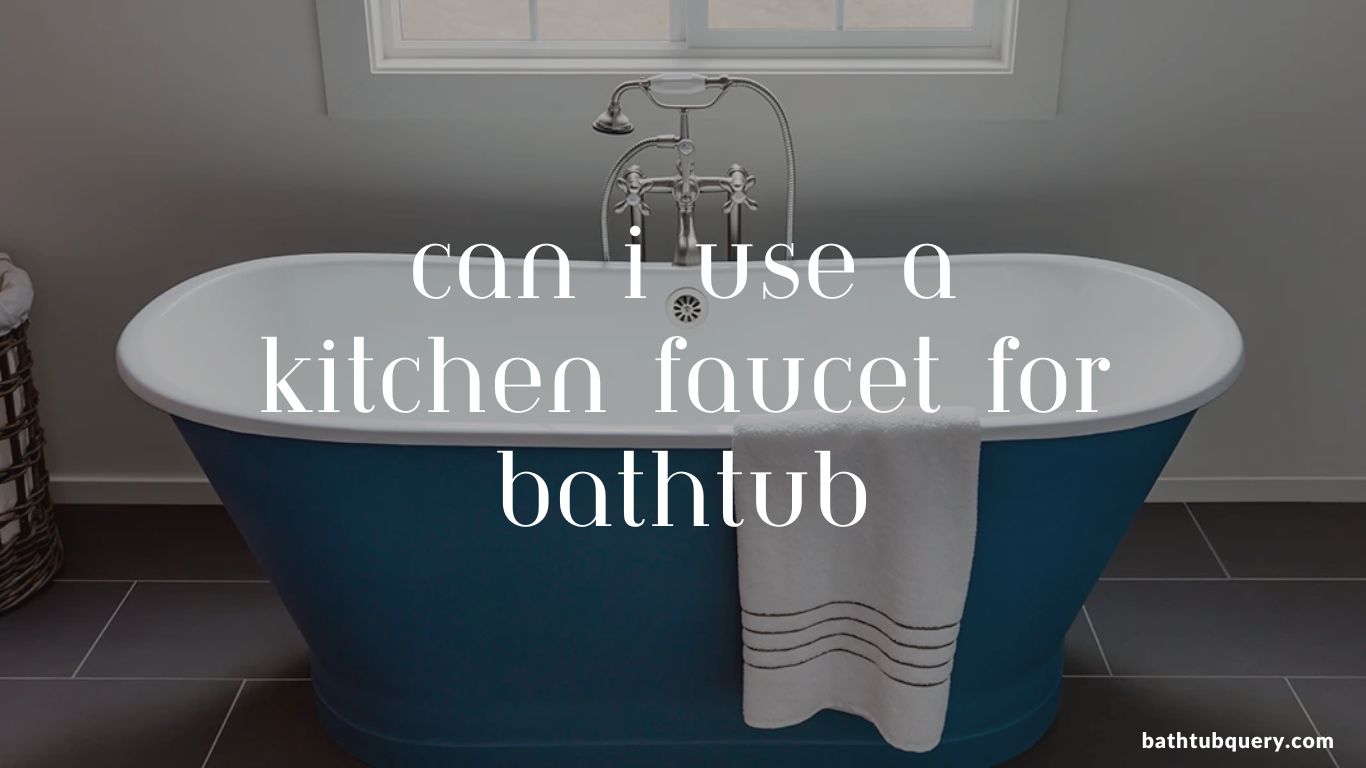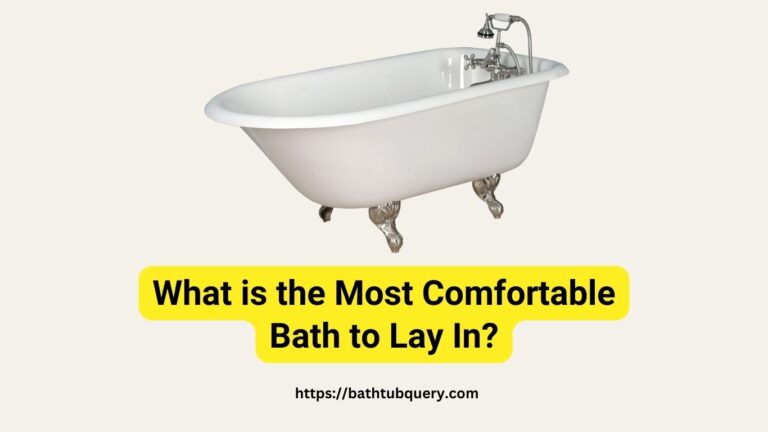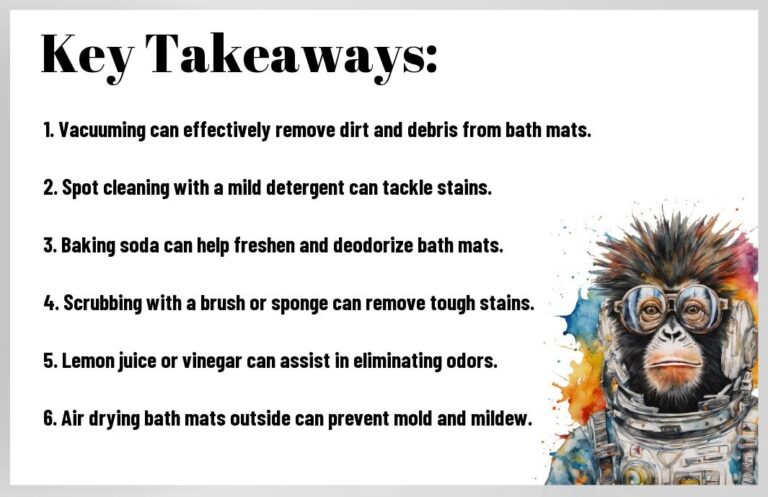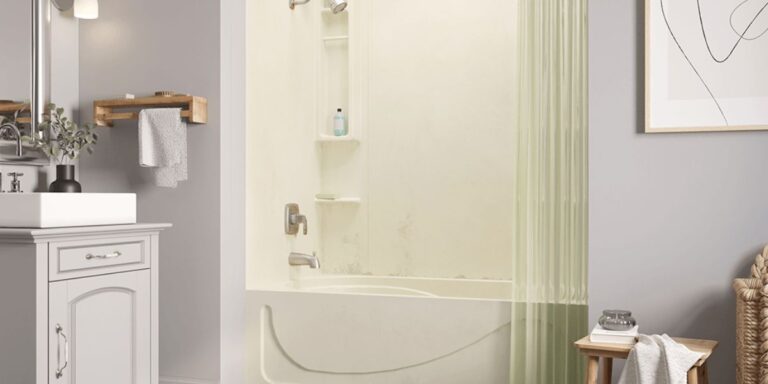Can I Use a Kitchen Faucet for Bathtub? A Practical Guide
The world of home improvement is replete with various possibilities, but sometimes homeowners wonder: Can I use a kitchen faucet for a bathtub? For the adventurous DIY enthusiast, this question is not just one of practicality, but also one of creativity and innovation. Let’s dive into the answer.
Can I Use a Kitchen Faucet for a Bathtub?
No, you can’t use a kitchen faucet for a bathtub. The plumbing requirements are different. Kitchen faucets connect to a smaller ⅜” water supply pipe, while bathtubs require a larger ½” pipe for more water flow and to fill the tub quicker. Therefore, kitchen faucets and bathtub faucets are not interchangeable.
Consideration 1: Size and Design
- Kitchen Faucets: Generally taller and often come with a swivel spout feature for the wide range of motion needed in kitchen tasks.
- Bathtub Faucets: Typically shorter and broader, designed for filling a large volume quickly.
Consideration 2: Flow Rate
- Kitchen Faucets: Lower flow rates around 1.5 to 2.2 gallons per minute (GPM)
- Bathtub Faucets: High flow rates ranging from 5 to 7 GPM.
While it’s possible to use a kitchen faucet for a bathtub, you may encounter problems due to differences in design, size, and flow rate.
How to Install a Kitchen Faucet in a Bathtub?
If you’re determined to install a kitchen faucet in your bathtub, here are the steps you’d need to follow:
- Measure the Bathtub: Ensure the kitchen faucet fits in the space without obstructing the showerhead or causing discomfort while using the bathtub.
- Remove the Bathtub Faucet: This typically involves loosening the set screws and removing the faucet from the wall.
- Install the Kitchen Faucet: Fix the new kitchen faucet into the space and tighten it securely.
Alternatives to Using a Kitchen Faucet for a Bathtub
If you find that a kitchen faucet doesn’t suit your bathtub, consider these alternatives:
- Freestanding Bathtub Faucets: These faucets are a great addition to any bathtub. They offer a stylish and contemporary look, perfect for a modern bathroom.
- Roman Tub Faucets: These are designed for deck-mount installations and give your bathroom a traditional yet elegant touch.
- Tub Wall-Mount Faucets: They attach directly to the bathroom wall and provide a clean, uncluttered look.
Factors to Consider When Using a Kitchen Faucet
Given the differences in flow rate, height, reach, and materials between kitchen and bathtub faucets, carefully consider the following factors before deciding whether a kitchen faucet can work sufficiently for your bathtub:
Flow Rate
The roughly 50% lower flow rate of a kitchen faucet compared to a bathtub fixture is one of the biggest functionality concerns. Will the 2 GPM flow of a kitchen faucet make filling your tub excessively slow and inconvenient?
For a standard bathtub of 30-60 gallons, a kitchen faucet may take 15-25 minutes to fill the tub, instead of the more typical 10-15 minutes of a bathtub fixture. Whether this slower fill time is tolerable depends on your schedules, bathing needs, and patience level.
Spout Height and Reach
Pay close attention to the spout height and reach of the kitchen faucet you wish to use. Is the spout positioned high enough to make adjusting controls and diverting water flow comfortable? Can you access all areas of your tub from that height and reach, or will it result in straining and splashing?
If necessary, you may be able to mount a kitchen faucet higher up to improve ergonomics. But its narrower reach may still make evenly filling the entire tub length a challenge.
Finish and Durability
Consider your bathroom’s humidity levels and the kitchen faucet’s ability to resist corrosion and tarnishing over time from moisture and temperature changes. Is the finish prone to spotting or streaking from hard water mineral deposits? Is the construction durable enough for the bathroom environment?
Avoid using a brass kitchen faucet that is not properly coated for moisture resistance. Opt for stainless steel or finishes like brushed nickel or oil-rubbed bronze that resist corrosion.
Drainage
Check that the kitchen faucet you wish to use has adequate swivel clearance for draining comfortably into the bathtub. Kitchen faucets designed for double bowl sinks may have limited motion that makes aligning the flow into a tub drain awkward.
Look for a single-handle high-arc kitchen faucet with at least 120 degrees of easy swivel motion for the best drainage ergonomics.
Appearance
From a purely aesthetic standpoint, determine if the style and finish of your kitchen faucet match the rest of your bathroom’s decor and hardware. Many kitchen faucets have sleek, modern designs that could clash with a clawfoot tub or a more traditional bathroom motif.
While you can pair any faucet design with your tub, choosing a finish and style that complement your bathroom’s look can help the kitchen faucet seem more visually cohesive.
Pros and Cons of Using a Kitchen Faucet
To decide if a kitchen faucet is suitable for your bathtub needs, weigh the potential advantages and disadvantages:
Pros
- More affordability – Purchasing a new kitchen faucet is generally cheaper than buying a dedicated bathtub fixture. If you’re on a tight budget, repurposing a kitchen faucet you already own can save you the cost of a new tub faucet.
- Quick temporary solution – Installing an existing kitchen faucet to get your tub working again can serve as a temporary fix until you purchase a new bathtub fixture.
Cons
- Slower fill times – The roughly 2 GPM flow rate of a kitchen faucet may take twice as long to fill your bathtub versus a bathtub faucet designed for 4-6 GPM flows.
- Ergonomic challenges – Lower spout mounting height and limited reach of a kitchen faucet can make adjusting controls and water flow awkward. This could result in straining your back and shoulders.
- Not made for bathroom conditions – Kitchen faucets lack the moisture-resistant finishes, materials, and antimicrobial properties needed to withstand the humid bathroom environment over years of use.
Frequently Asked Questions
Is it difficult to install a kitchen faucet in a bathtub?
The process can be tricky due to differences in design and size. If unsure, hire a professional.
Will a kitchen faucet fill a bathtub as quickly as a bathtub faucet?
No, kitchen faucets usually have lower flow rates, leading to slower filling times.
Can I use a kitchen faucet in a bathtub without any modifications?
Possibly, but it depends on the specific designs of your kitchen faucet and bathtub.
Are there alternatives to using a kitchen faucet in a bathtub?
Yes, alternatives include freestanding bathtub faucets, Roman tub faucets, and tub wall-mount faucets.
What are the main differences between kitchen and bathtub faucets?
The main differences lie in their size, design, and flow rates. Bathtub faucets are designed to fill large volumes quickly, while kitchen faucets are designed for range of motion.
Key Takeaways
While you can use a kitchen faucet for a bathtub, it’s important to consider size, design, and flow rate differences. Installation requires careful measurement and potentially hiring a professional. Consider exploring alternatives for a more suitable solution.
Related guides:

William J. Bullock is a licensed plumber with over 15 years of experience installing and repairing bathtubs. He runs his own plumbing company in Greenville and serves residential and commercial clients. William is dedicated to providing honest, transparent advice to help homeowners make informed decisions about their bathroom renovations.
He has established expertise in selecting bathtubs, planning custom installations, diagnosing issues, and completing repairs. William aims to share practical tips and reliable recommendations based on extensive hands-on work. When he isn’t on a job site, William enjoys spending time with his family and volunteering at local community events. He takes pride in delivering quality service and enjoys helping people upgrade their homes.







